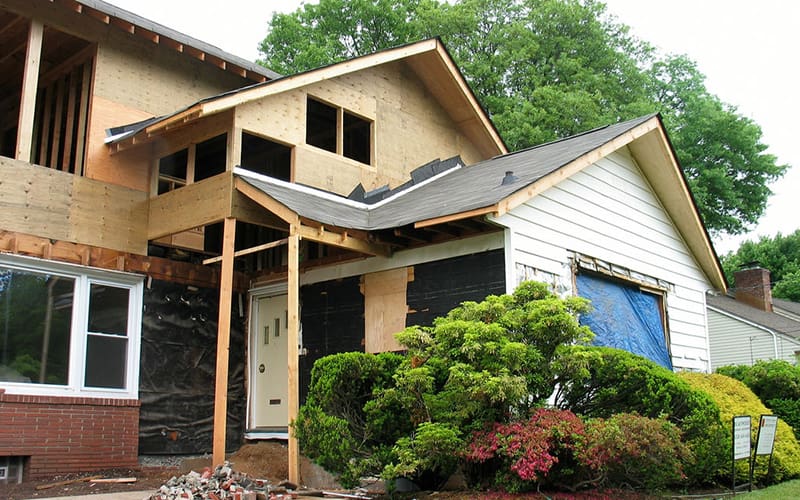
If you're renovating or painting a home built before 1978, there are some key steps you should take to keep your family safe from lead poisoning hazards. Photo: Chaim Zvivia via Creative Commons 2.0
As part of Lead Poisoning Prevention Week, we’re revisiting this blog about how to keep your kids safe from lead poisoning when renovating or painting your home. Be sure to check out the Lead Free Kids NH website for more tips and info on lead poisoning prevention.
If your home was built before 1978, it’s essential to the health of your family that you ask an important question: Will my home improvement project disturb lead-based paint?
As I’ve written previously, the problem of childhood lead poisoning is – regrettably – not a thing of the past. Rather, here in New England, where so many of our houses and apartments pre-date the 1978 ban on lead-based paint, the threat of lead poisoning remains real. What’s more, there is no safe level of lead for children, and even small exposures can lead to permanent, irreversible harm.
When many of us think of childhood lead poisoning, we think of kids eating paint chips. Tainted chips are indeed a problem, but the most frequent form of exposure is through lead dust – tiny, often-invisible particles that can be inhaled or ingested by children through normal hand-to-mouth behavior. Painted surfaces with friction points, such as windows and doors, can be a source of lead dust.
Another major source of lead dust? Household painting and renovation projects that unwittingly create significant lead hazards – for example, scraping, sanding, or stripping paint; breaking through walls; or tearing down old sills, doors, and jambs.
Lead-Safe Requirements for Contractors
The good news is that the Environmental Protection Agency has established a program requiring contractors to be trained in – and follow – lead-safe practices. Under EPA’s Renovation, Repair, and Painting program, any contractor who disturbs lead paint while working in a pre-1978 home – from plumbers to electricians to painters – must be Lead-Safe Certified.
The bad news? Not every contractor who should be Lead-Safe Certified actually is.
Contractors disturbing lead-based paint inside or outside your home without required training, and without safe practices, could be violating the law. More importantly, they could be putting the health of your family – especially your kids or grandkids – at great risk.
So, before hiring that next contractor, be sure to ask them: Are you certified by EPA as a Lead-Safe contractor, and will the people working on this project be following lead-safe practices? If the response to this question is no, or otherwise fails to inspire confidence, find a new contractor – one who has been certified under EPA’s Renovation, Repair, and Painting program. And don’t hesitate to ask to see your contractor’s certificate, as they are supposed to have it with them at all times.
Do-It-Yourselfers – Protecting Your Family’s Health
Of course, because EPA’s program only applies to contractors, it fails to address one of the most significant sources of exposure – us “weekend warriors” who take on projects on our own.
Fortunately, the New England Lead Coordinating Committee has prepared a helpful guide for do-it-yourselfers that makes clear the importance of preparing, containing, and properly cleaning up work sites to prevent the spread of lead dust and chips. It also highlights unsafe practices to avoid at all costs (such as dry sanding, scraping, and sand-blasting) and safe ones to follow. You can also view a good video on the topic here.
When it comes to childhood lead poisoning and its lifelong effects on kids, prevention is key. So while lead-safe practices may add to the time and complexity of your project, considering what’s at stake, following such practices, or better yet hiring a Lead-Safe Certified contractor, is the only way to go.



